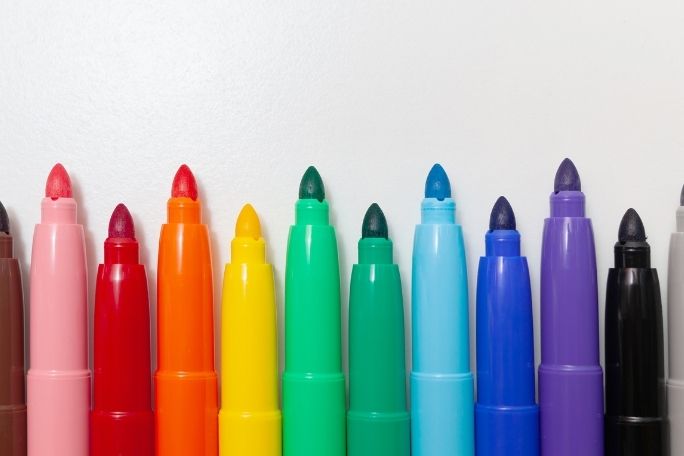Lesson summary
Students create artworks based on their Connector Pen memories. Students begin the lesson by viewing clips of people sharing their Connector Pen memories, and then conduct a Think Pair Share activity to identify their own favourite Connector Pen memory. They will then plan, create and share a drawing that describes their Connector Pen memory. NOTE: Students who don’t have Connector Pen memories can create a drawing that describes their most interesting or important experience with art.
Learning intentions:
Students will...
- understand how to use a range of drawing techniques and practices when planning and making their artworks.
Success criteria:
Students can...
- plan and create drawings
- use different drawing techniques
- use Connector Pens to make art
- engage in group and class discussions.
Lesson guides and printables
Curriculum links
Select your curriculum from the options below.
Lesson details
Curriculum mapping
Content descriptions:
Year 5 & 6 Visual Arts:
- Develop and apply techniques and processes when making their artworks (ACAVAM115).
Syllabus outcomes: VAS3.2
General capabilities: Critical and creative thinking
Relevant parts of Years 5 & 6 Visual Arts achievement standards: Students use visual conventions and visual arts practices to express a personal view in their artworks. They demonstrate different techniques and processes in planning and making artworks.
Unit of work: Creative Sustainability – Years 5 & 6 – Visual Arts
Time required: 60 mins.
Level of teacher scaffolding: Low – oversee clip watching and art making.
Resources required
- Student Worksheet – one copy per student
- Device capable of presenting an online clip to the class OR tablets for students to view clips in groups
- Drawing materials and tools, including Connector Pens, recycled paper, A3 drawing paper, Goldfaber graphite pencils, rulers, PVC-free erasers and Grip sharpeners
- The following handouts may be useful for students: Colouring Techniques handout, Colour Wheel factsheet, Art Elements and Principles factsheet, Texture rendering techniques factsheet.
Skills
This lesson is designed to build students’ competencies in the following skills:
- Communication
- Creativity
Additional info
Faber-Castell has long understood the importance of creativity to all people, especially to young people. It is also continuously searching for environmentally friendly processes and high-quality materials to enhance children’s creative experience throughout every development phase. For more information about Faber-Castell, click here.


Welcome back!
Don't have an account yet?
Log in with:
Create your free Cool.org account.
Many of our resources are free, with an option to upgrade to Cool+ for premium content.
Already have an account?
Sign up with:
By signing up you accept Cool.org's Terms and Conditions(Opens in new tab) and Privacy Policy(Opens in new tab).